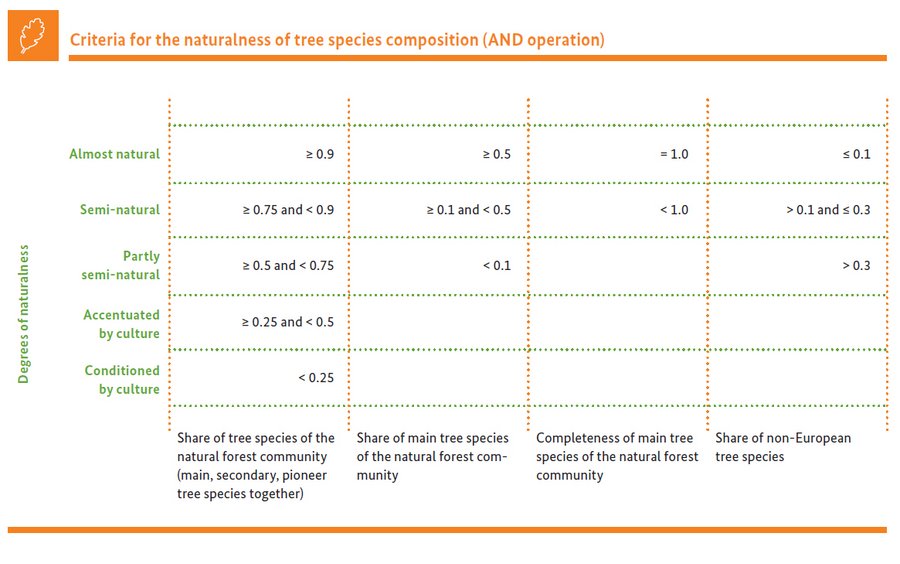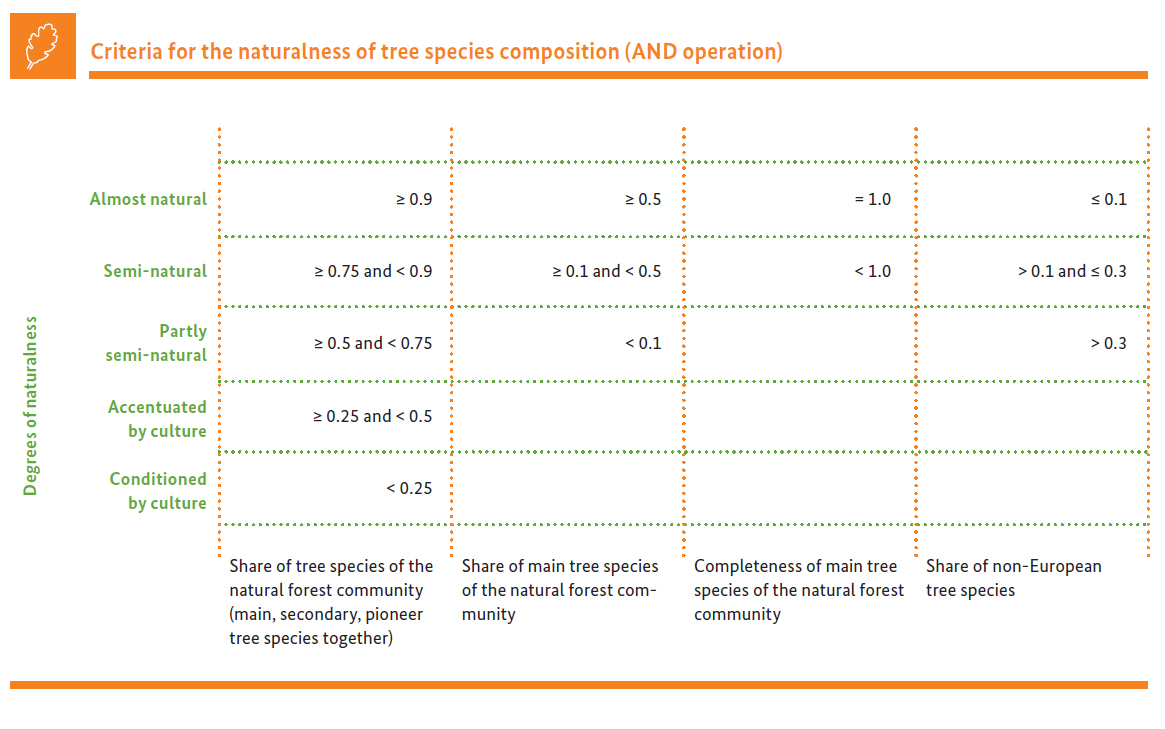Calculated pure stand
The main stand including plenter forest is calculated and divided up in areas of one age class and one tree species.
Communal forest
Forest owned by towns, local authorities or special purpose associations, other corporations, institutions and foundations under public law.
Compact wood
Above-ground woody mass having a diameter of over 7 centimetres including bark. Trees under 7 centimetres DBH are not compact wood.
DBH
"Diameter at breast height" or the diameter of a tree at a height of 1.3 metres
Forest (Federal Ministry of Food, Agriculture and Consumer Protection: Survey instructions for the Third National Forest Inventory (2011–2012). 2nd revised version, May 2011)
The definition of forest according to the National Forest Inventory is based on that of the Federal Forest Act: within the meaning of the NFI, forest is any area of ground covered by forest vegetation, irrespective of the information in the cadastral survey or similar records. The term forest also refers to cutover or thinned areas, forest tracks, firebreaks, openings and clearings, forest glades, feeding grounds for game, landings, rides located in the forest, further areas linked to and serving the forest including areas with recreational facilities, overgrown heaths and moorland, overgrown former pastures, alpine pastures and rough pastures, as well as areas of dwarf pines and green alders. Heaths, moorland, pastures, alpine pastures and rough pastures are considered to be overgrown if the natural forest cover has reached an average age of five years and if at least 50 % of the area is covered by forest. Areas with forest cover in open pastureland or in built-up areas of under 1,000 square metres, coppices under 10 metres wide and the cultivation of Christmas trees and ornamental brushwood as well as parkland attached to country houses are not forest within the meaning of the NFI. Watercourses up to 5 metres wide do not break the continuity of a forest area.
Forest cover
The forest cover describes the forest site irrespective of stand boundaries. It is divided into old forest cover, main forest cover and young forest cover.
Gap
Due to the sample method, no trees are recorded here although the sample is located on stocked timberland.
Hectares (ha)
Area measurement unit, 10,000 square metres
Layering, one or multi-layered forest
The layers describe the vertical structure of the forest. All trees that have a mutual canopy and exhibit at least a 10 % degree of coverage form one layer. Therefore, forests that have two crown canopies above one another that do not touch are considered two-layered. This can, for example, be young growth beneath the canopy of an old tree. Plenter forests are particularly demanding for silviculture and structurally dynamic. They are always multi-layered, but demand special site conditions and tree species compositions and occur only in negligible area percentages in Germany.
Main forest cover
That part of the forest cover with the main economic significance. If the coverage of trees over 4 metres in height amounts to at least 5/10, this is always the main forest cover.
Main stand
The canopy class with the main economic significance. If the degree of coverage of the highest canopy amounts to at least 5/10, this is always the main stand. Evaluations of the main stand include the plenter forest.

